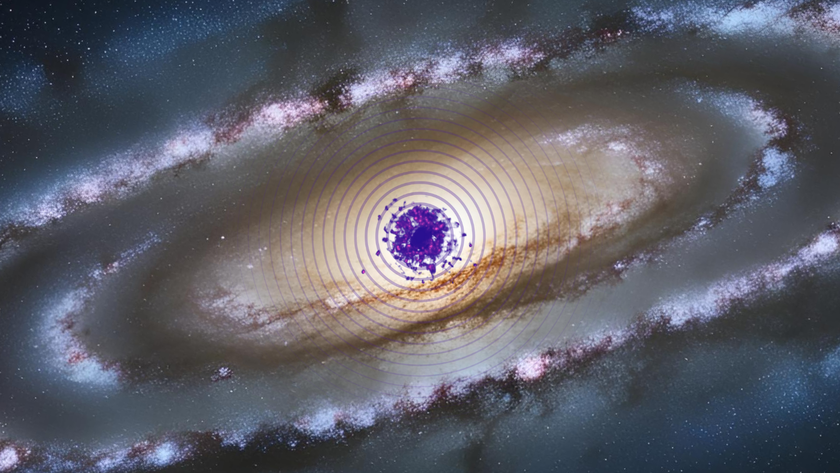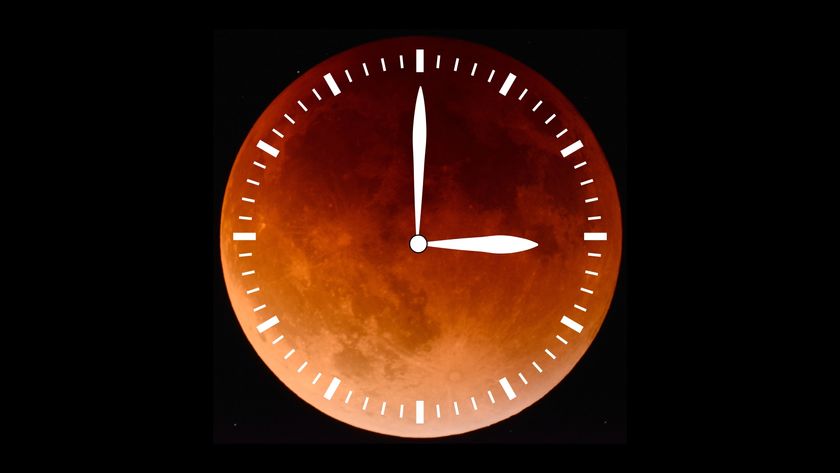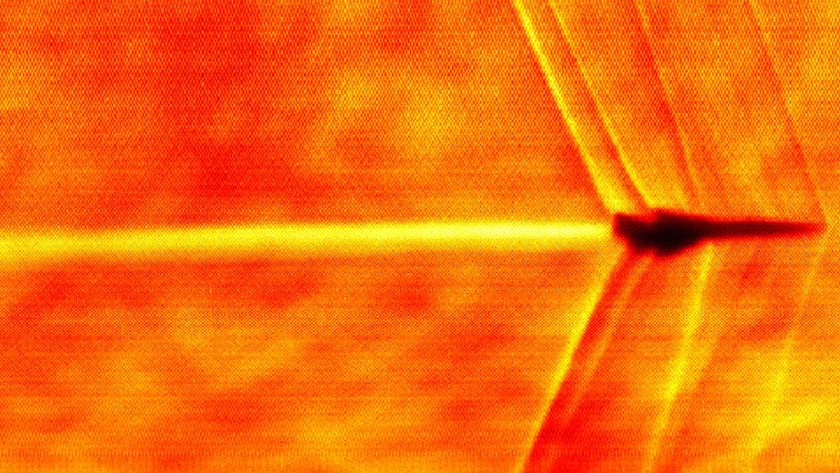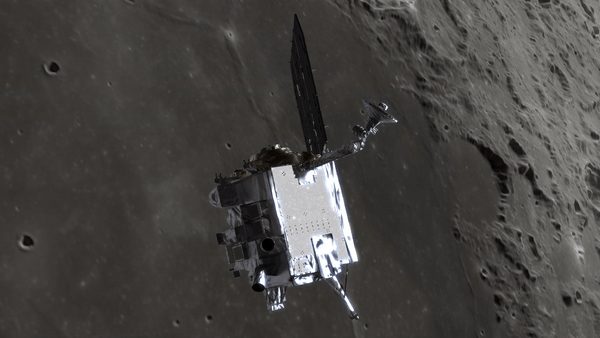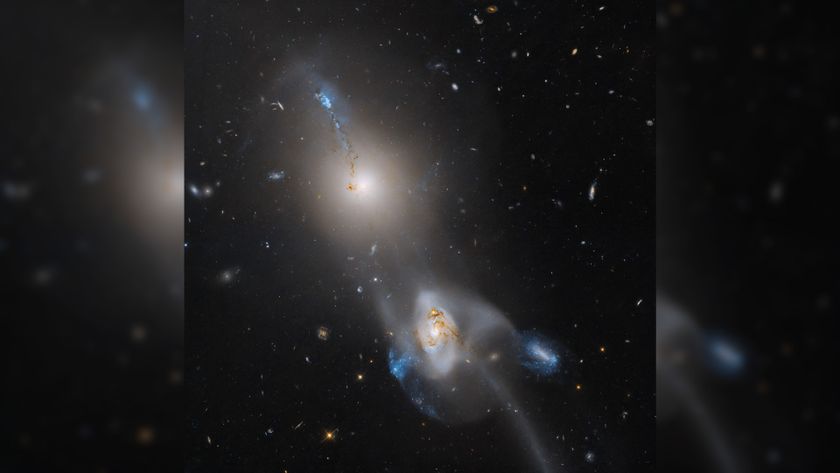Astronomer Responds to Pluto-Not-a-Planet Claim
Last week,various media reported that exhibits at the Rose Center for Earth and Space inNew York City give short shrift to Pluto, with the center omitting thefar-flung ice ball from planetary displays of our solar system and implyingthat Pluto is not a planet. On Friday, Neil de Grasse Tyson, director of theHayden Planetarium at the center, explained the center's treatment of Pluto inan open letter to the Cambridge-Conference Network, an international network ofasteroid researchers and planetary scientists who have advocated a change inPluto's status for more than two years.
Withpermission from CCNet, Dr. Tyson's letter is reproduced below:
Regarding ourexhibits in New York City's new Rose Center for Earth and Space, I am surprisedand impressed by the amount of recent media attention triggered by our decisionto treat Pluto differently from the other planets in the solar system.
I am surprisedbecause our exhibit has been in place since opening day, 19 February 2000, andour treatment didn't seem to be newsworthy at the time. I am impressed thatpeople feel so strongly about Pluto that much time and attention had beendevoted to it in print and on the air.
The NewYork Times' front page article, which ignited the recent firestorm, donneda title that was somewhat afield of what we actually did, and which I wouldlike to clarify. The title read "Pluto Not a Planet? Only in NewYork," which implied that we kicked Pluto out of the solar system and thatwe are alone in this action and that, perhaps more humorously, Pluto wasn't bigenough to make it in NYC.
I havewritten previously on the subject, in an essay titled "Pluto's Honor"(Natural History, February 1999) where I review how the classificationof "planet" in our solar system has changed many times, most notablywith the 1801 discovery of the first of many new planets in orbit between Marsand Jupiter. These new planets, of course, later became known as asteroids. Inthe essay, arguing in part by analogy with the Asteroid Belt, I argued stronglythat Pluto, being half ice by volume, should assume its rightful status as theKing of the Kuiper Belt of comets. Apart from my views expressed there, I havea different sort of responsibility to the public as director of the HaydenPlanetarium and as project scientist of the Rose Center for Earth & Space.
Thatresponsibility is as an educator for a facility that has received an average of1,000 people per hour over the past eleven months. For the exhibit onplanets in our "Hall of the Universe," rather than use the wordplanet as a classifier, we essentially abandon the ill-defined concept andsimply group together families of like-objects. In other words, instead ofcounting planets or declaring what is a planet and what is not, we organize theobjects of the solar system into five broad families: the terrestrial planets,the Asteroid Belt, the Jovian planets, the Kuiper Belt and the Oort Cloud. Withthis approach, numbers do not matter and memorized facts about planets do notmatter. What matters is an understanding of the structure and layout of thesolar system. On other panels, in an exercise in comparative planetology, wehighlight rings, storms, the greenhouse effect, surface features and orbitswith discussions that draw from all members of the solar system whereinteresting and relevant.
Get the Space.com Newsletter
Breaking space news, the latest updates on rocket launches, skywatching events and more!
Ourintro-exhibit panel meets the visitor's expectations head-on:
------------------
"Whatis a planet?"
"Inour solar system, planets are the major bodies orbiting the Sun. Because wecannot yet observe other planetary systems in similar detail, a universaldefinition of a planet has not emerged. In general, planets are massive enoughfor their gravity to make them spherical, but small enough to avoid nuclearfusion in their cores."
------------------
A secondpanel, describes and depicts the layout of the solar system:
-----------------
"OurPlanetary System"
Fiveclasses of objects orbit our Sun. The inner terrestrial planets are separatedfrom the outer gas giant planets by the Asteroid Belt. Beyond the outer planetsis the Kuiper Belt of comets, a disk of small icy worlds including Pluto. Muchmore distant, reaching a thousand times farther than Pluto, lies the Oort Cloudof comets."
-----------------
Our goal wasto get teachers, students and the average visitor to leave our facilitythinking about the solar system as a landscape of families rather than as anexercise in mnemonic recitation of planet sequences.
That beingsaid, I have benefited from some reasoned feedback on what we have done. Asmany are already aware, we use our giant 87-foot (26.5-meter) sphere (housingthe Hayden Space Theater in the upper half and a recreation of the first threeminutes of the Big Bang in the lower half) as an exhibit unto itself. We invokeit to compare the relative sizes of things in the universe for a walk-around"powers of 10" journey that descends from the observable universe allthe way to atomic nuclei. About midway in the journey you come upon the sizescale where the sphere represents the Sun. On that scale, hanging from theceiling, are the Jovian planets (the most highly photographed spot in thefacility) while a set of four small orbs are also on view, attached to therailing. These are the terrestrial planets. No other members of the solarsystem are represented here. This entire exhibit is about size, and not muchelse. But the absence of Pluto (even though the exhibit clearly states thatit's the Jovian and terrestrial planets that are represented) has led about 10percent of our visitors to wonder where it is.
In theinterest of sound pedagogy we have decided to explore two paths: 1) Possiblyadd a sign at the right spot on the size scales exhibit that simply asks"Where's Pluto" and gives some attention to why it was not includedamong the models. 2) We are further considering a more in-depth treatment ofthe life and times of Pluto to add to our kiosks, which contain ourcomputer-searchable data base of current astrophysics news that we display in atimely fashion on a video "bulletin" wall. This material might evencontain a sampling of the various points-of-view expressed on how planetsshould be counted for those who feel compelled to do so.
I close withthe opinion that a mid-ex style mission to Pluto might resonate much moredeeply with the public and with Congress if instead of saying "we mustcomplete the reconnaissance of solar system's planets by sending probes toPluto," we say "we must begin the reconnaissance of a newlydiscovered, and hitherto uncharted swath of real estate in our solar systemcalled the Kuiper Belt, of which, Pluto reigns as king."
RespectfullySubmitted,
Neil deGrasseTyson
Department ofAstrophysics & Director, Hayden Planetarium Division of Physical Sciences
AmericanMuseum of Natural History
Join our Space Forums to keep talking space on the latest missions, night sky and more! And if you have a news tip, correction or comment, let us know at: community@space.com.

Space.com is the premier source of space exploration, innovation and astronomy news, chronicling (and celebrating) humanity's ongoing expansion across the final frontier. Originally founded in 1999, Space.com is, and always has been, the passion of writers and editors who are space fans and also trained journalists. Our current news team consists of Editor-in-Chief Tariq Malik; Editor Hanneke Weitering, Senior Space Writer Mike Wall; Senior Writer Meghan Bartels; Senior Writer Chelsea Gohd, Senior Writer Tereza Pultarova and Staff Writer Alexander Cox, focusing on e-commerce. Senior Producer Steve Spaleta oversees our space videos, with Diana Whitcroft as our Social Media Editor.

